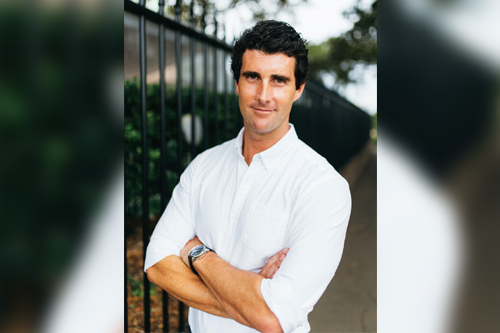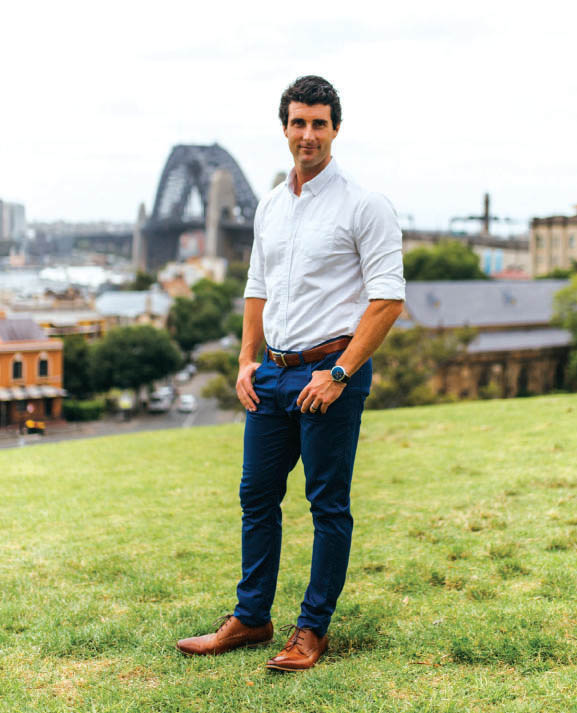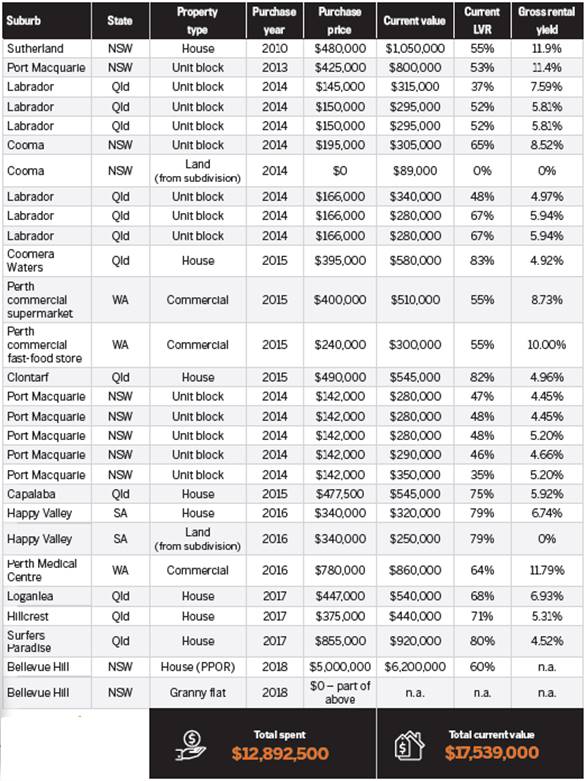
"I love cash flow, as it helps with lending and makes your investment journey less risky because you’re not betting solely on growth"
Sometimes one has to be pushed to breaking point in order to make a life-altering decision. For Scott O’Neill, the growing stresses of his nine-to-five job pushed him to that point.
“I was working as an engineer, which was incredibly stressful as it called for long days that often extended through the weekends. I was disillusioned with this way of life, so I researched the best way to set myself up with a nest egg,” he says.
Property investment came out on top as the ideal option, and in 2010 Scott started his foray into the industry. At this point, Sydney and Melbourne were not booming in any way, shape or form; in fact, it was immediately post-GFC, and there was a lot of trepidation about investing in these cities.
“It was similar to the current Sydney/Melbourne market dynamic that we have now. There was a lot of doom and gloom in the air, and I remember reading myriad forums and articles predicting a 40% drop in Sydney’s property values – the exact same message going around now.”
Investing seemed a risky prospect, but Scott decided to take the plunge with a strategy that combined potential for both long-term gains and short-term profit.
“Rather than sit out of the market, I targeted a high-yielding, positively geared property with a house and a granny flat in Sutherland. My theory here was that I was making about $150 per week on rent after all costs, which meant that I wasn’t relying solely on capital growth,” he explains.
 Scott O’Neill’s success is built on careful planning and risk management. “I’ve always bought properties with the image of GFC number two hitting tomorrow. This negative mindset makes me plan and think long and hard about the consequences of my every move.”
Scott O’Neill’s success is built on careful planning and risk management. “I’ve always bought properties with the image of GFC number two hitting tomorrow. This negative mindset makes me plan and think long and hard about the consequences of my every move.”
AT A GLANCE
Years investing: 8
Current number of properties: 28
Portfolio value: $17,540,000
“This was the only reason I had the guts to put my life savings into a property, which could have potentially fallen in value. Luckily for me, the experts were wrong, and that same property increased in value by a whole $570,000!”
Encouraged by the strong performance of the Sutherland home, Scott has stuck to the same strategy ever since.
“From the outset, my goal has always been to buy high cash flow [properties] with the chance to create equity or enjoy capital growth. I have been able to follow this strategy with every single purchase, besides my last PPOR [principal place of residence],” he says.
“I love cash flow as it helps with lending and makes your investment journey less risky because you’re not betting solely on growth.”
Living in spreadsheets
Scott made his first few investments with his wife before transitioning to buying under a company structure. He works with skilled mortgage brokers, and aside from seeking high cash flow and capital growth properties, he looks for opportunities to buy below market value and to transact with distressed sellers.
“I wish to always buy below the value of comparable sales in the area to get a head start on growth,” he explains.
This mindset, along with a stroke of luck, landed Scott his biggest deal thus far – the purchase of his PPOR, located in the Eastern Suburbs of Sydney.
“It was a horrible divorce distressed sale for the vendors, but it was a high-value deal of approximately $5m for me. By some miracle, I was the only one bidding at the auction. As a plus, the renovated house next door sold three months later for $9.6m!”
The Eastern Suburbs market has been recording strong growth in the midst of the Sydney downturn because locals report low debt and are largely unaffected by the Australian Prudential Regulation Authority’s regulatory changes. With this property, Scott has enjoyed seven-figure profits already.
He has also been able to incorporate his background as a former engineer and apply his skill as a self-confessed “numbers nerd” to his investment decisions.
“I’ve always bought properties with the image of GFC number two hitting tomorrow. This negative mindset makes me plan and think long and hard about the consequences of my every move. My thought process is to consider which properties will be least hurt in an economic crash.”
Scott has not limited himself to residential homes either. He also invests in commercial properties, particularly those in the food and medical sectors, which are less likely to be affected by economic issues. And as he does with residential dwellings, he looks to purchase below the average purchase price per square metre.

Capitalising on market momentum
Given his strategy, Scott knows that timing is key to the buying process, so he typically keeps an eye on market trends.
“I look at affordable areas in markets that have started moving upwards after a number of flat years, such as Brisbane, as well as anything that can create equity in a flat market. Every property I purchase must be structured correctly and positively geared.”
As a result, Scott has been able to develop a self-sustaining portfolio made up of a diverse set of properties that allow him to ride the momentum of different markets.
“I’ve made sure that my properties are in areas that will have exceptional capital growth – Sydney, Southeast Queensland, Perth, Adelaide and some major regional centres. Thus, I can keep all my properties even if I’m not earning income,” he says.
With almost a decade of property investment experience under his belt, one important thing Scott has learned is to not stretch himself too thin, and instead to outsource tasks to the professionals as needed.
“Trying to save money by doing maintenance and property management yourself is not viable if you’re managing nine properties, with three being interstate! It was by far the most stressful point of my life,” he says.
While Scott is no longer handling the day-to-day responsibilities of property management, he always keeps tenants’ needs in mind with each investment. He also makes an e ort to keep rents low for tenants through the purchase of high-yielding properties (above 6%) in order to eliminate the rent–mortgage gap.
“I’ve always championed the notion of ‘honest’ investing – it mustn’t be at another’s expense, and it must leave the market in a similar state to the way I found it. A principle that governs each purchase is asking myself, ‘Would I personally live in the prospective property, work in the city or the property’s location, and be happy to pay the going rate in rent?’” he says.
“If the answer is no, then I either pass on the property or renovate the property until it is fit for tenants to live in.”
